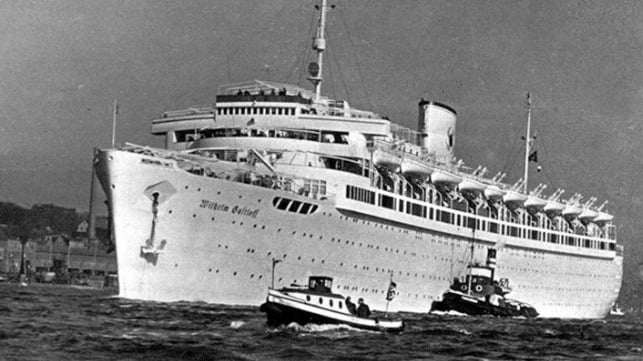Photos: New Sonar Imagery of the Deadliest Shipwrecks in History

Survey ship HMS Echo has investigated shipwrecks at the heart of two of the greatest losses of life at sea in history. Devonport-based Echo has been on operations in the Baltic and recently studied the wrecks of Second World War vessels Wilhelm Gustloff and Goya.
More than 16,000 people perished when they were sunk in Germany’s Operation Hannibal in 1945, the evacuation of German soldiers and civilians from East Prussia as the Red Army closed in.
Using her specialised multibeam echo sounder, a device used to map the sea floor, Echo was able to show the destruction caused by Russian submarine torpedoes that struck the German ships. In the images captured by Echo, Nazi cruise ship Wilhelm Gustloff – which was repurposed as a hospital ship and barracks for U-boat trainees – can be seen split in three parts while the Norwegian merchant vessel Goya, commandeered by the Germans to support the Baltic U-boat flotilla in 1940, is broken towards the bow.
“While the wrecks were fascinating to explore and image using the echo sounder, it was sobering to think that they were the final resting place for so many people caught up in the ravages of war," saiud Lieutenant Phil Boak of HMS Echo.

Wilhelm Gustloff (Royal Navy)

Wilhelm Gustloff (Royal Navy)

Goya (Royal Navy)

Goya (Royal Navy)
Evacuation gone wrong
In 1945 the Germans were in full retreat across Eastern Europe pursued by the Red Army. In early January, the Third Belarussian Front launched the East Prussian Offensive, cutting off East Prussia from the rest of Germany.
Hundreds of thousands of German soldiers and civilians were trapped and Operation Hannibal was enforced to evacuate them. Over the next 15 weeks, around 900,000 German civilians and 350,000 soldiers were evacuated west across the Baltic to Germany and occupied Denmark (huge numbers compared to Dunkirk, which saw 338,226 British and French troops evacuated across the English Channel). Both Wilhelm Gustloff and Goya were pressed into service for this vast undertaking.

Refugees passing through Danzig, Operation Hannibal, 1945 (Royal Navy)

Refugees in Gdansk, Operation Hannibal, 1945 (Royal Navy)
On January 30, Wilhelm Gustloff left Danzig (now Gdansk), packed with around 10,000 civilians and military personnel. She was soon spotted by the Russian submarine S-13 which successfully launched three torpedoes at the liner, sinking it within the hour. It is thought up to 9,500 people perished in the freezing cold waters of the Baltic, making the event the single greatest loss of life in a maritime incident.
On April 16, Goya left the port of Gotenhafen (now Gdynia), with around 6,700 passengers and crew. The ship, and the small armada she was sailing with, was spotted by the Soviet submarine L-3 and close to midnight, the submarine fired four torpedoes, two of which struck Goya. The damage was fatal and the ship sunk in less than four minutes. There were only 183 survivors.
For one member of HMS Echo’s company, Operation Hannibal and the wrecks of Wilhelm Gustloff and Goya are of great significance. His grandmother, a 14-year-old orphan at the time, was evacuated from Danzig in the early months of 1945.
“If the events of 1945 had panned out differently, I may well not be here serving in the Royal Navy today. It just goes to show how large-scale evacuations such as Operation Hannibal can send ripples through time affecting generations of families," he said.
This article appears courtesy of Royal Navy News and may be found in its original form here.
The opinions expressed herein are the author's and not necessarily those of The Maritime Executive.
